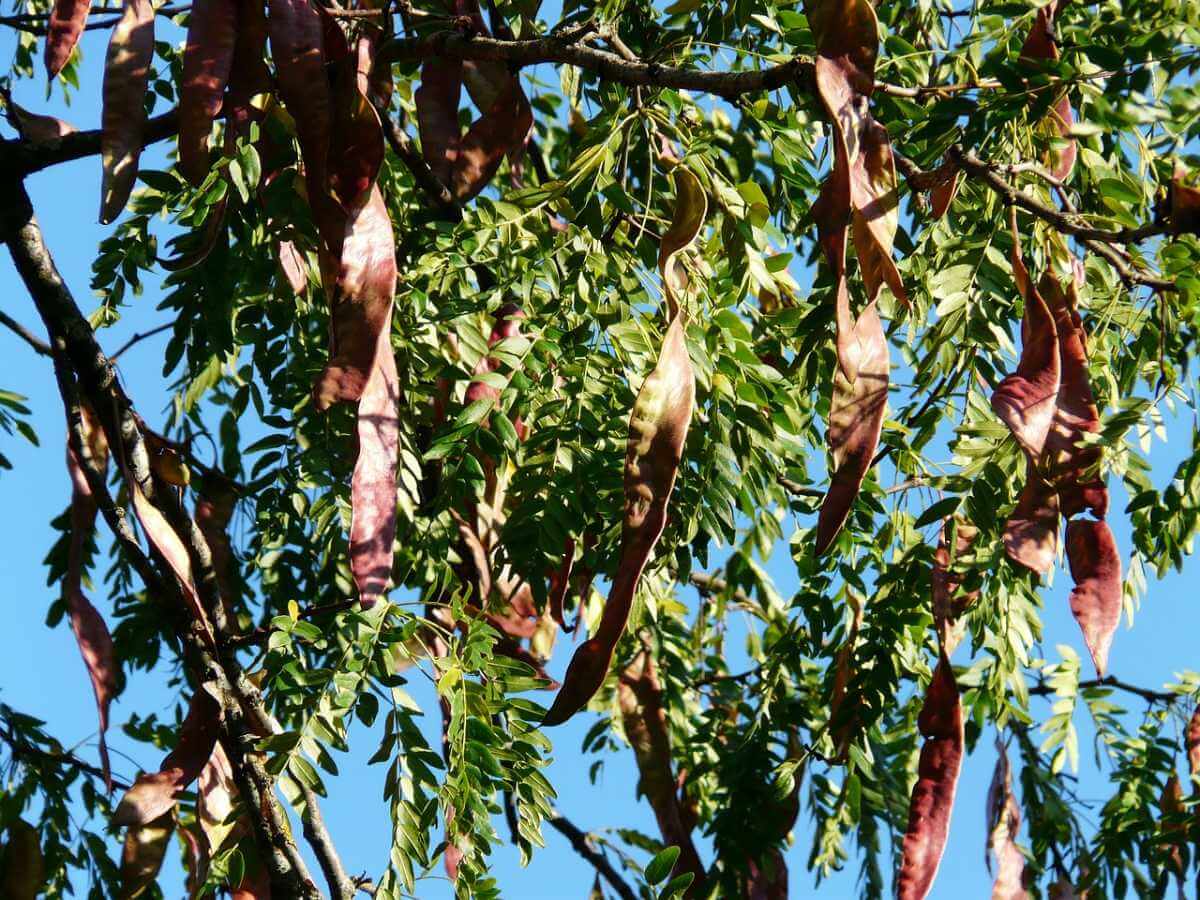’Tis the season for specialty borer applications to rid your trees and shrubs of honey locust borers, black locust borers, and viburnum borers. Like all borer species, these pests lay their eggs in the bark and the larvae which hatch then burrow beneath the bark to feed. Heavy infestations will kill a tree. Unfortunately, infestations are all too often detected too late to save the tree. When it comes to borers–not bores, that’s entirely different–Denver tree service companies advocate prevention over treatment.
The Morton Arboretum and U.S. Department of Agriculture Forest Service describe honey locust and black locust borers, which are similar.
Honey locust borers attack small and medium sized honey locust trees and branches, preferring diameters exceeding two inches thick. They prefer stressed trees to healthy plants. Adult honey locust borers emerge in June and feed on the foliage. Females lay eggs covered with a frothy substance that hardens. When the eggs hatch, the larvae burrow beneath the bark to feed. Honey locust borer infestation causes gradual decline of the tree and dieback of twigs and branches in the crown.
Black locust borers don’t eat honey locust trees, just black locusts and its cultivars. The larvae tunnel into the wood and weaken the tree’s structure, making it susceptible to breakage in strong winds. Adult black locust borers are easy to spot: about three-quarters of an inch long with reddish legs, black antennae, and bright yellow bands circling a black body. Adults often feed on goldenrod in the fall. Egg laying occurs in late summer through mid-autumn. Larvae emerge in spring and early summer. This native insect has a range that spans the Allegheny Mountains to Georgia to the Ozark Mountains.
Viburnum borersfeed on the lower parts of viburnum trunks, branches, and roots. Adults are day-flying moths that look like wasps with one-half inch long, bluish-black bodies with yellow markings and clear wings. Larvae are pinkish white caterpillars with reddish brown heads. Like most borer species, these prefer already stressed plants and aren’t fussy about which variety of viburnum they eat. Only arrow-wood viburnum is reported to be resistant.
Treatment is applied either as a spray or soil drench. Spray insecticides should contain permethrin or carbaryl to be effective and should be applied directly to the bark of the plant from the soil line upward. Preventive sprays should be timed just prior to egg laying for best results. Because timing spray applications is important, pheromone traps can be used to capture adult males to confirm insect activity.
As with all chemical applications, check to see whether certification or licensing is required before heading out to the local garden center to purchase a gallon or six. Because timing of the application is just as crucial as coverage, application of preventive sprays is best left to the experts to tree service company experts.
Should you discover too late that trees on your property have succumbed to borer infestations, the trees will have to be removed. Especially with locust trees and their long, sharp thorns, it’s best to hire a professional tree removal service to safely cut down the tree and remove the infested wood. Infested wood should not be composted.
American Arbor Care specializes in tree and shrub health. Trust your Denver tree service professionals to accurately determine the pest infestation and to know how and when to control it. Also experts in tree removal, our team can cut down infested and diseased trees safely and dispose of the damaged wood. Call them at (303) 639-8584 to schedule a consultation to protect your valuable trees.

